25 Brazilian Delicacies That Will Send People Scurrying To South America
Traveling the world is always fun, and eating all types of different foreign delicacies is a good enough reason to want to visit another country. That being said, today we will introduce to you twenty-five of the most delicious dishes that are part of the Brazilian cuisine. Brazil is a very big country, in fact, it is the fifth-largest country in the world, therefore its cuisine is very eclectic. Each of its five regions has its own specific dishes that it is famous for, even though most of these delicacies have already made their way to the other parts of the country. So whenever you visit the home of soccer and Carnaval, make sure to try all of these delicious dishes and treats. From sweet delicacies to savory treats, Brazil’s got them all.
Brigadeiro
We are starting with the classics. Brigadeiro is a favorite among all Brazilians, regardless of origin, social class, or any other factor. It is simple, tasty, and delicious. It is very common in birthday parties in its truffle form, but it can also be easily made at home and eaten straight from the pot using a spoon when made in a fudge texture.
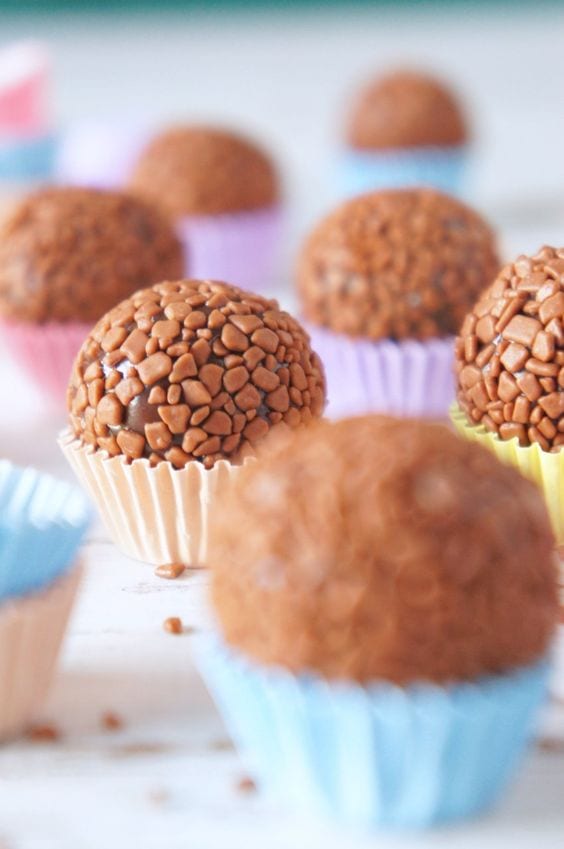
Fun fact: even though Brigadeiros are usually laid out on the table at birthday parties, the guests are only allowed to eat them after “happy birthday” is sung. Otherwise, the guest is considered rude and impatient. If you want to make these at home, all you will need is condensed milk, cocoa powder, and a little bit of butter. This delicious treat would be great for birthday parties and also for gatherings with friends.
Coxinha
This delicious snack, originating in the state of São Paulo in the 19th century, consists of fried battered dough filled with shredded chicken. It was originally made with chicken thigh, which is why its name is “little thigh”, and its shape resembles a chicken thigh. Nowadays, they are also made with different fillings, and can even include catupiry cheese. You can find coxinhas anywhere: cafés, bakeries, and even roadside restaurants.
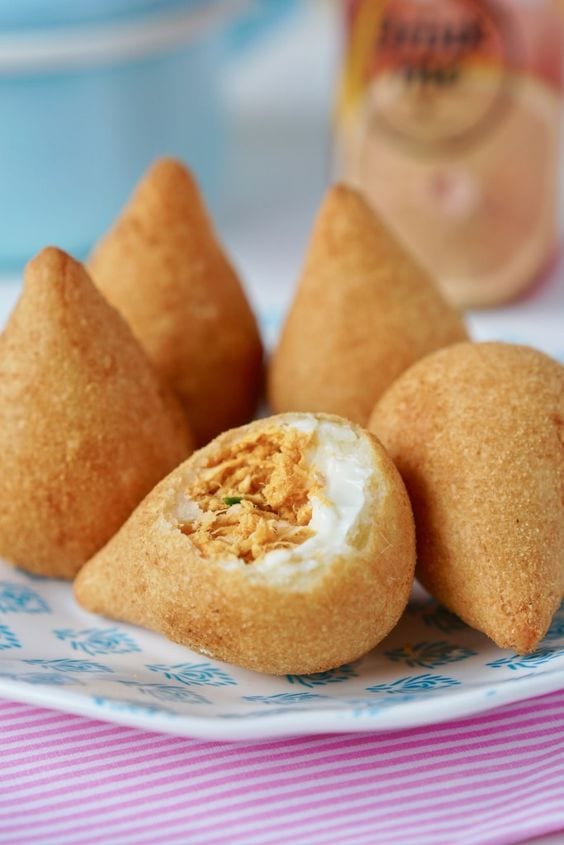
Even though the coxinha is loved by all Brazilians (even the vegans have created a version of it made of jackfruit), it also splits many opinions in the country. That is because half of the population believes that you are supposed to eat the coxinha from the skinny part down, while the other half swears that the right way to do it is starting from the bigger part so that the filling of the coxinha cannot spill out.
Feijoada
This dish is a big part of the Brazilian culinary culture and it is actually made in numerous Portuguese-speaking countries. Its name derives from the word “feijão”, which simply means “beans”. Since this is a high-calorie meal, the feijoada is usually served on Sunday lunches, which last for hours, and tend to take up the entire day. These meals are normally shared between extended family or friends while drinking some beers.
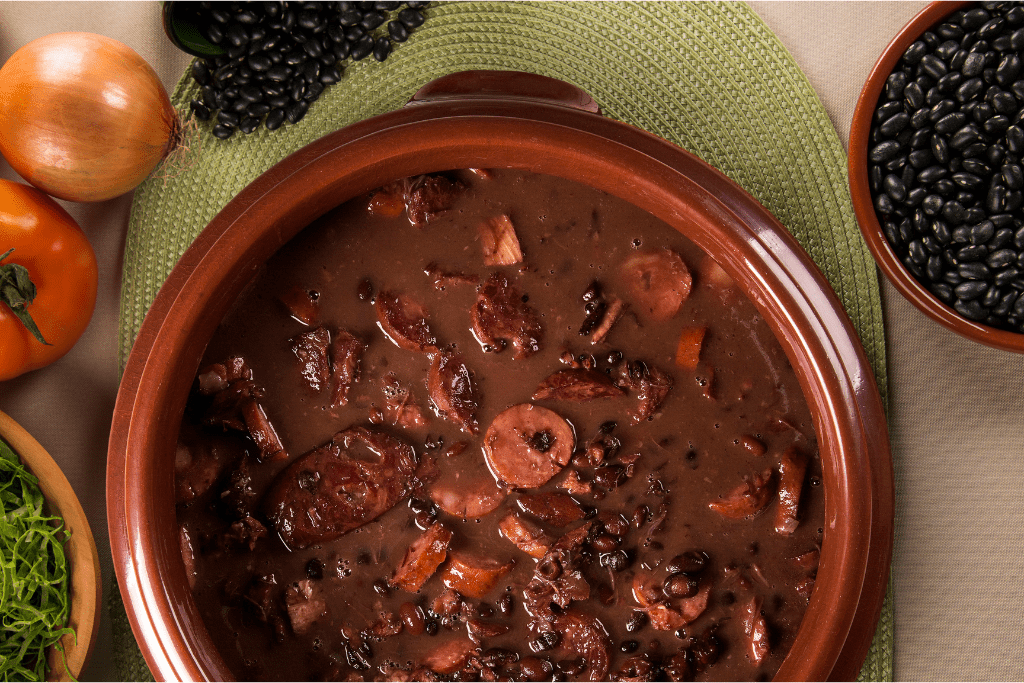
It is believed that the feijoada was created during the slavery period in Brazil when slaves were only given black beans and pork leftovers by their masters. The slaves came up with the idea of making a stew with the beans and pork feet, ears, tails, and all other parts that they could get. Nowadays, this dish is enjoyed by all social classes. The most common version is a combination of black beans, pork, and beef, served with rice and toasted manioc flour.
Queijo Coalho
“Queijo coalho” is a very literal name for “rennet cheese”. This type of cheese is original from the Northeast, and states such as Ceará, Rio Grande do Norte, Paraíba, and Pernambuco are the biggest producers of this recipe. It is believed that queijo coalho was invented in the 18th century, when travelers would take milk in their bags during their long journeys. After a few days, the milk would curdle and turn into a dough.
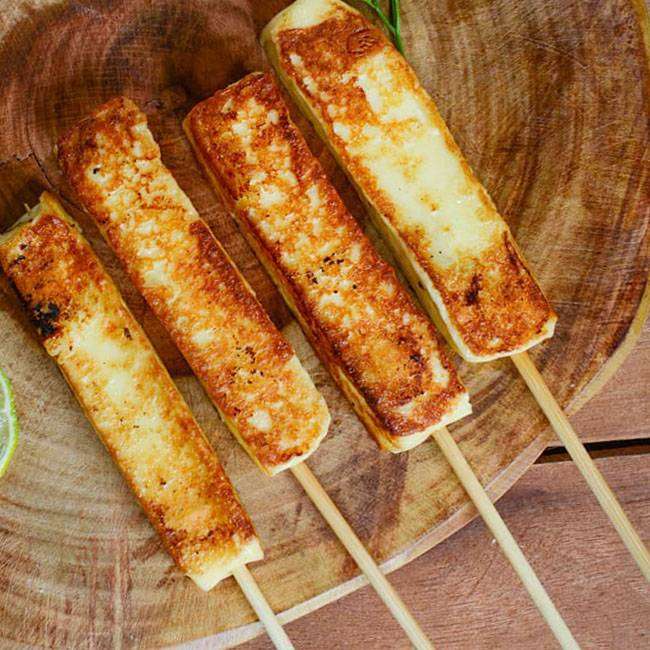
Queijo coalho is usually eaten off a stick after being grilled or baked. It is a very popular treat in traditional outdoor barbecues and also a great snack for beach days. It is also part of another famous Northeastern dish called “baião de dois”, made of rice, beans, queijo coalho, and different types of spices. This tasty cheese is a great source of calcium, vitamins, phosphorus, proteins, lipids, mineral salts, and carbohydrates.
Pão de Queijo
These cheese puffs are perfect for breakfast or an afternoon snack, and can be bought in any bakery or supermarket in the country. It is believed that the pão de queijo was created in the 18th century in the south of Brazil. However, it was only popularized in the 1950s, when they started being sold in stores with other types of bread and cookies, like pão francês and broas.
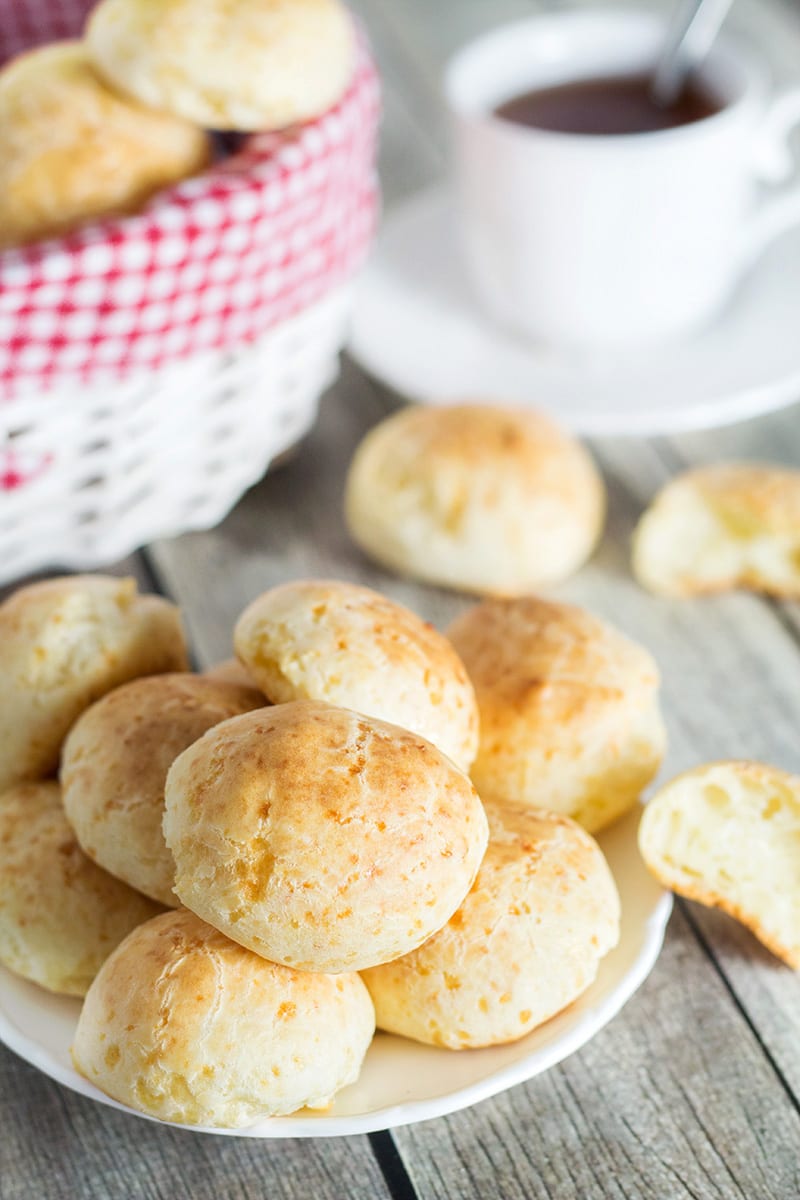
There are many different recipes to make pão de queijo, but they all include one basic ingredient (besides cheese, obviously): manioc flour. This flour gives them a softer consistency than regular wheat flour would, and when combined with “minas” cheese, it makes the cheese puffs perfectly spongy and elastic.
Polenta Frita
While actually an Italian dish, the polenta and all of its variations are part of the Brazilian culinary culture as well. Polenta can be prepared in numerous different ways: fried, baked, or even as a purée. However, the most common form it takes in Brazil is fried. Like French fries, the polenta frita is a great side dish for steaks — which is why it is commonly made at churrasco barbecues.
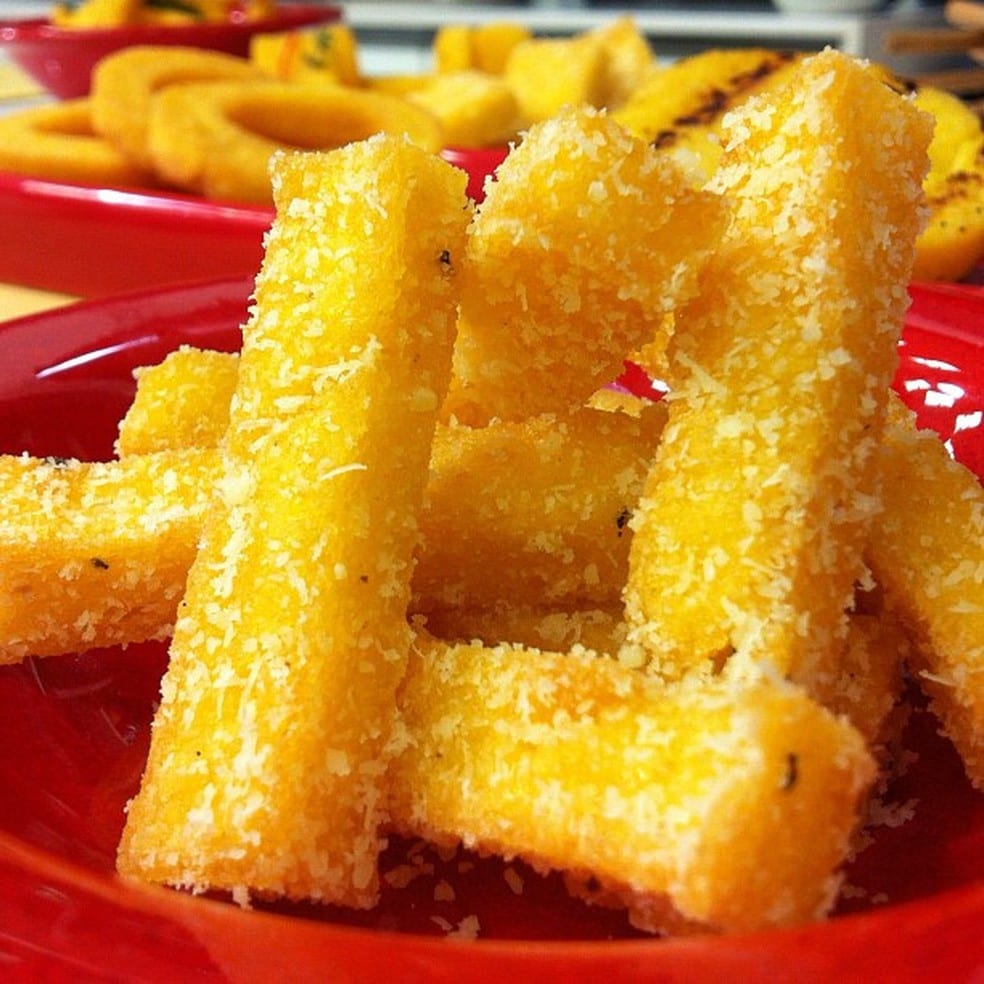
Polenta is made from corn starch, which is has iron, magnesium, zinc, vitamin A, vitamin C, besides vitamin B1, vitamin B2, vitamin B3 and vitamin B6. Carotenoids like the polenta promote antioxidant activity, protect against heart diseases, as well as some forms of cancer and cataract, improve the immune system, prevent aging, avoid gastric infections, regulate cellular growth, and improve your skin and eye health.
Bolo de Rolo
The bolo de rolo is a cake that is equally simple and intricate. Its recipe combines very few ingredients, but it takes an expert to pull off its preparation. Each layer of this roll is separated by melted guava filling, which makes the whole process of baking this cake long and laborious. This recipe is so special that in 2007, the bolo de rolo was designated an intangible heritage of the state of Pernambuco by law.
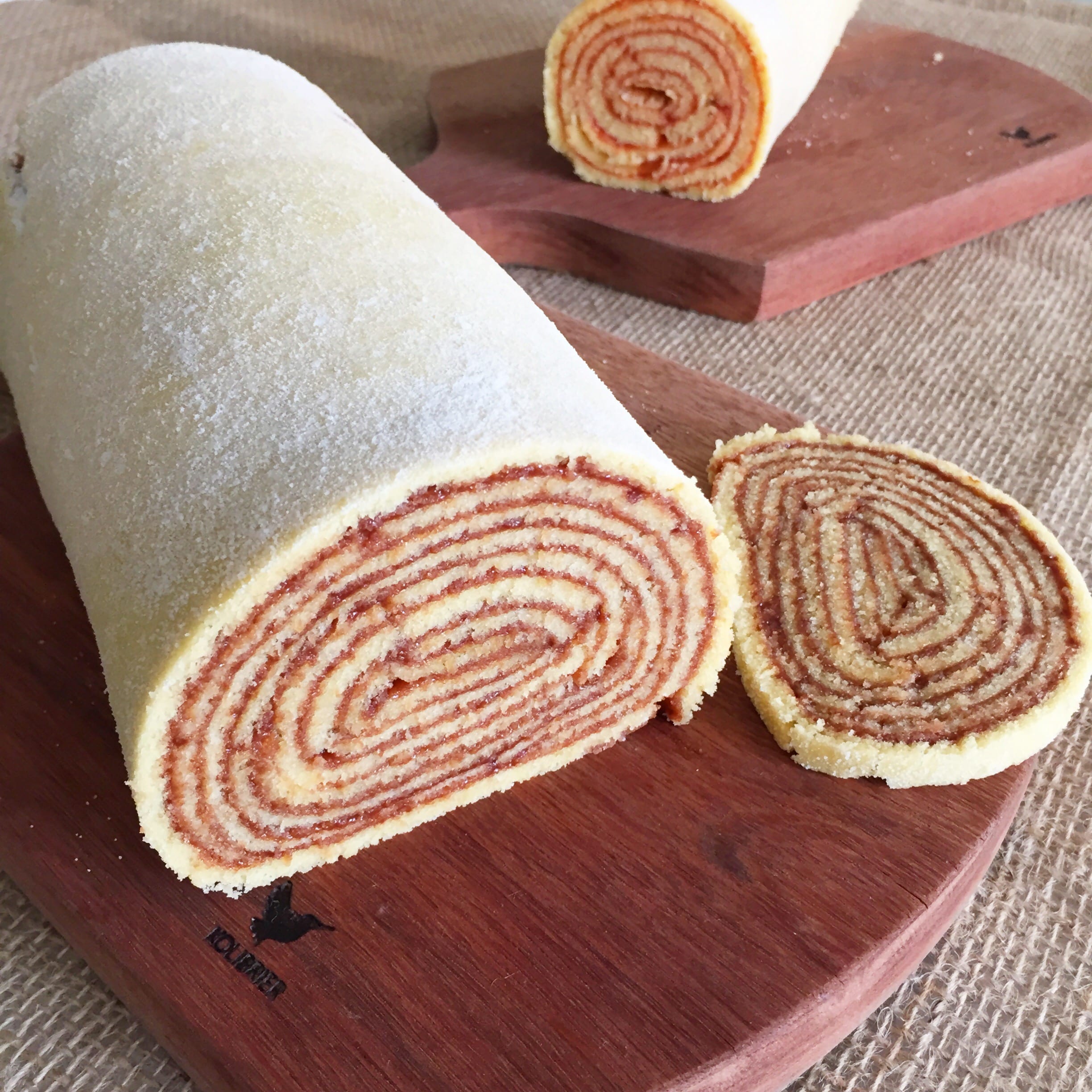
This recipe was brought to Brazil by the Portuguese colonizers, but once again was made better once they decided to use ingredients they could find in the Brazilian land. When they swapped the almonds used in their “colchão de noiva” cake for guava and rolled the dough a few more times, the bolo de rolo was invented. Nowadays, there are numerous fillings available, such as dulce de leche, chocolate, strawberry, and white chocolate. There are even bolos de rolo made with a chocolate dough!
Pamonha
Typical of the Northeastern region of Brazil, pamonhas can be found in two versions: sweet and savory. Just like North American tamales, pamonhas are made of corn and sometimes have fillings. Its sweet version is usually served plain or with grated coconut on top, but its savory version can be filled with anything from cheese and minced meat to peppers.
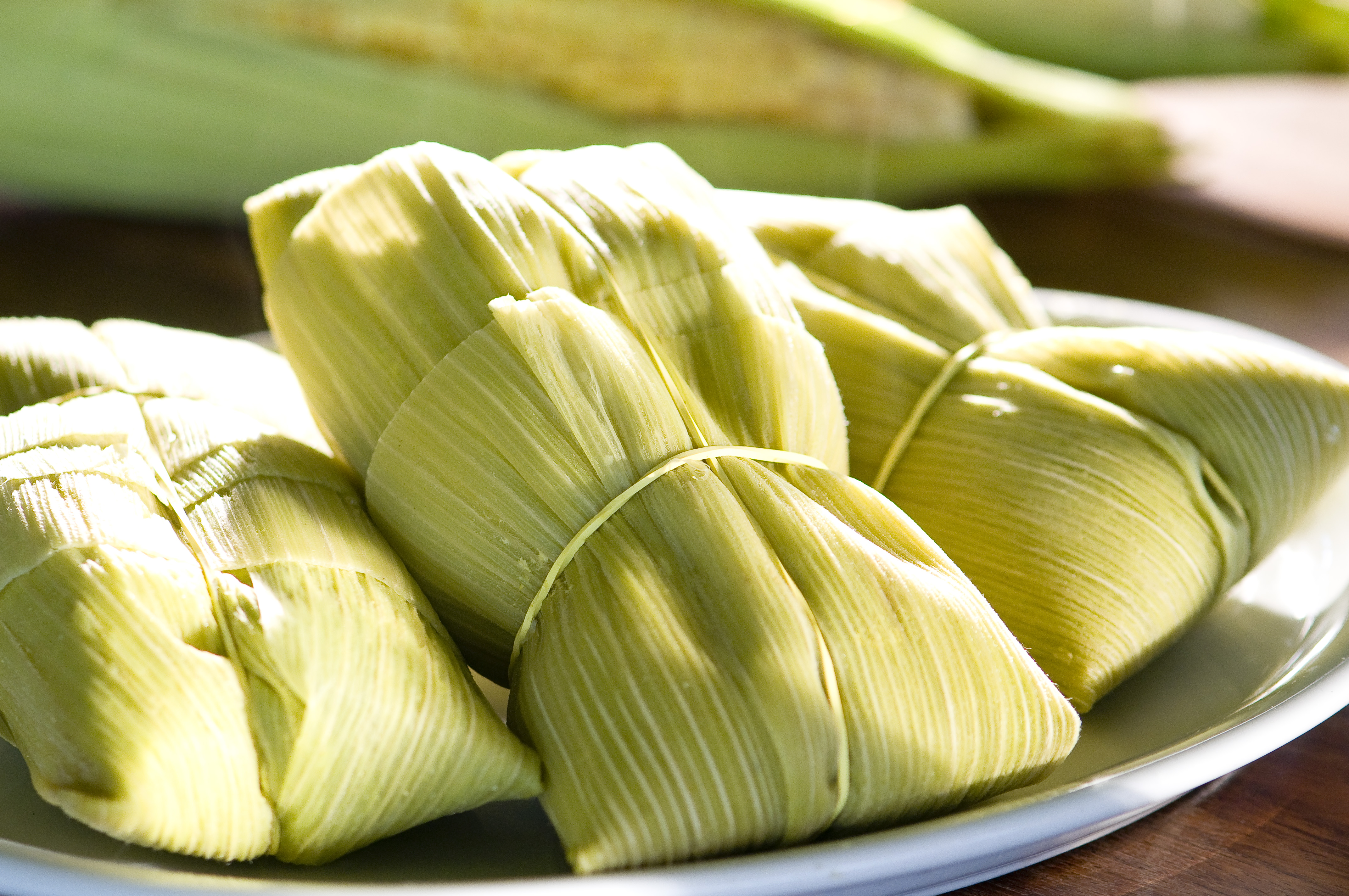
Even though the origin of this delicious dish is unknown, it is believed that the pamonha was created by the indigenous people of Brazil before colonization since its name is derived from the Tupi language (pa’muñã) and means “sticky”. Even though people always relate it to the carnivals that take place on the day of Nativity of John the Baptist, it can be easily found in cafes and markets all year round in the Northeast.
Farofa
Made mainly of fried manioc flour, farofa is usually served as a side dish with feijoadas, beans, and barbecued steaks. This recipe is originally from the North and Northeast regions of Brazil, but has made its way to the other parts of the country. Each area has its own little variations when it comes to mixing ingredients with the flour. Some people like to add bacon, while others mix in eggs, garlic, or even nuts.
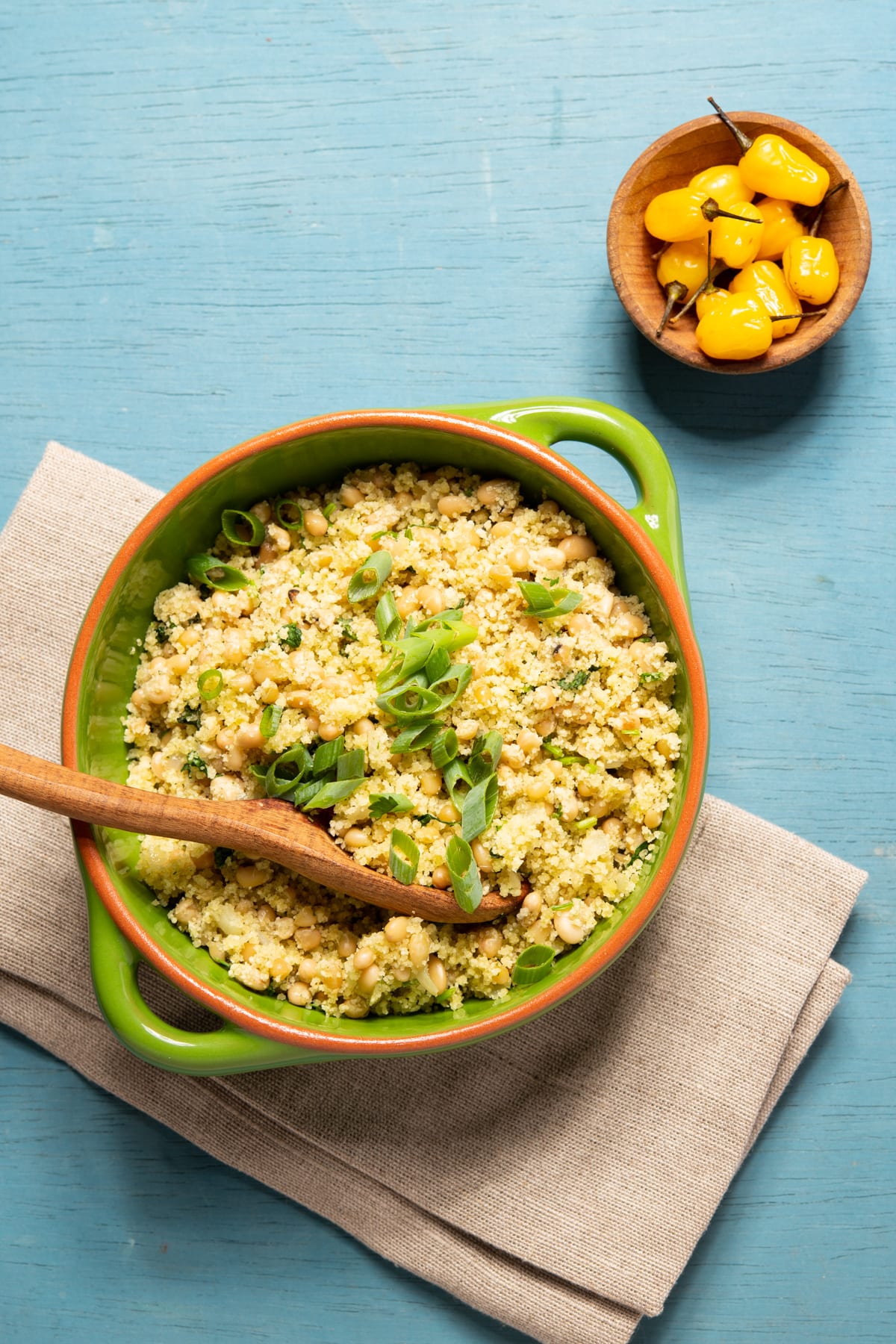
The most basic farofa includes manioc flour, chopped onions, and salt. Way before Portuguese colonization, the indigenous people of Brazil used the manioc flour as a substitute for spices, so that they would not taste the rawness of the food they were eating. Also, cutlery was not available back then, so the manioc flour was also used to bind the food and make it easier to eat with their hands.
Bolo de Fubá
The cornmeal cake is a staple in any Brazilian grandmother’s house. While it tastes great with a cup of coffee or soft drink, this recipe is a simple and fast one to bake whenever grandchildren come to visit. And we are not complaining at all! In fact, we would absolutely love to get our families’ recipes so we can always have a little taste of home!
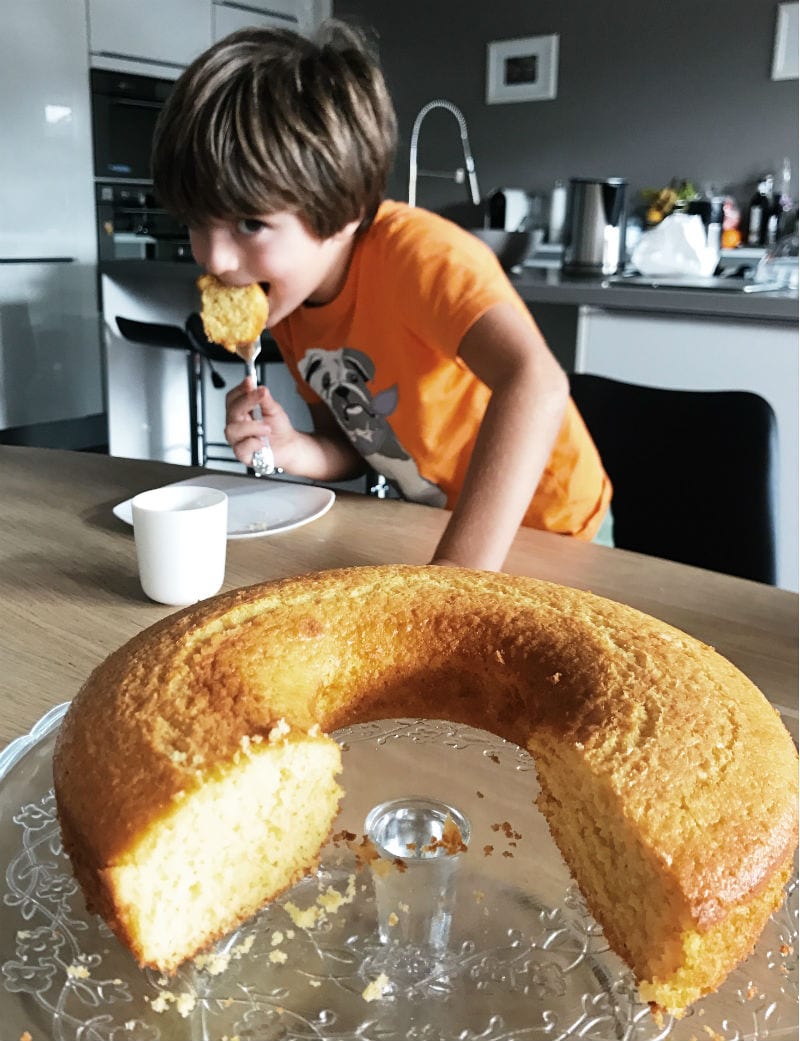
While there are some slight variations from one recipe to another, such as adding coconut or cheese (which can be used to create a creamy cake), the most important thing is using the finest cornmeal you can find. Whether it’s fubá, polenta, or a different type of cornmeal, make sure it is very finely ground; this is what creates the delicate, light texture of your cake. Otherwise, your cake will end up grainy and crumbly like a regular cornbread instead.
Açaí
All fitness influencers on social media talk about the benefits of eating the açaí berry, and they are right: eating açaí has been linked to interrupting premature aging, strengthening the immune system, improving heart health, protecting against some types of cancer, fighting anemia, avoiding neurodegenerative diseases, reducing inflammation, improving the intestine health, lowering cholesterol levels, improving blood circulation, avoiding osteoporosis, and even helping with eye health and protecting the skin from sun rays.
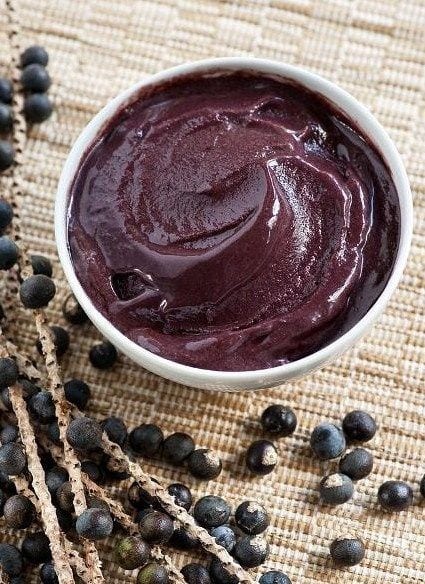
This powerful berry is native to the Amazon rainforest. The Brazilian states of Pará, Amazonas, and Maranhão are responsible for over 85% of its entire global production. It can be used in cosmetics such as hair and skin products, in the pharmaceutical industry as vitamins or supplements, as well as juices, alcoholic beverages, jams or even popsicles. However its most common form is a pulp in a bowl mixed with nuts and other fruits and berries.
Cuscuz
As you can see, the Northeast region of Brazil is the origin of most of these delicious dishes. The corn cuscuz or Northeastern cuscuz, as it’s called in Brazil, is usually served with coconut milk and is usually eaten at breakfast. Obviously, the Northeastern people of Brazil cannot say they invented this recipe from scratch, but definitely made it their own. While Moroccans make their couscous using semolina, Brazilians use corn flour.
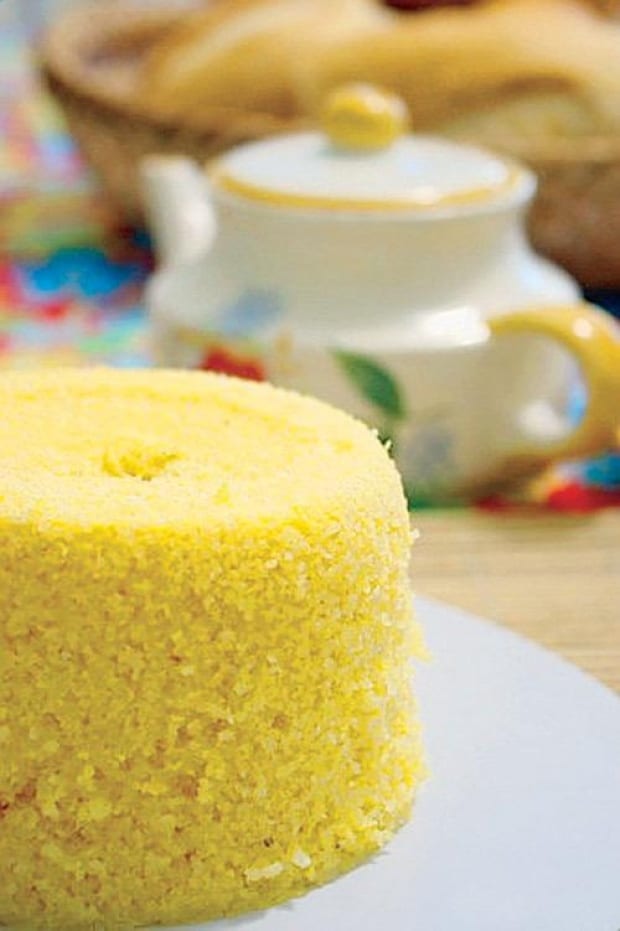
This dish is so famous in the country that you can even buy a specific pot to make it at home, called “cuscuzeira”. Mix cornflour with water and a pinch of salt, then knead it and put the dough in the cuscuzeira for 20 minutes. After that, you just need to cook it for at least fifteen minutes and leave it in the cuscuzeira for a bit longer. Enjoy!
Bolinho de Chuva
With a dough similar to a donut, these treats do not have any filling. Instead, their special taste is added by the sugar and cinnamon mix sprinkled on top of them after they are fried. Fun fact: Bolinho de chuva means “rain cake” in Portuguese, and it received this nickname because moms would make these for their kids when it was raining and the children were not able to run or play outside.
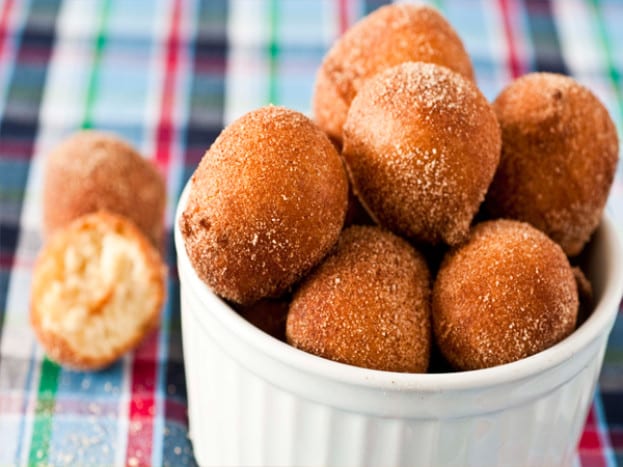
If you want to make these at home (whether it’s raining or not), all you need is two cups of wheat flour, two eggs, one cup of milk, and a spoon of baking powder. After mixing all the ingredients, use a spoon to roll the dough into little balls and use a pot with hot oil to fry them. Sprinkle a generous amount of cinnamon and sugar on your little treats, and you are ready to go.
Pastel
Usually eaten in street fairs and served with a cup of sugarcane juice, the pastel is a very common Brazilian snack. These fried thin crust pies come with all types of savory fillings like cheese, ground meat, heart of palm, or chicken, but there are sweet options such as chocolate and banana. And even though they are easily found at any open-air street fair around the country, there are establishments called “pastelarias” that sell a huge variety of pastel types and nothing else.
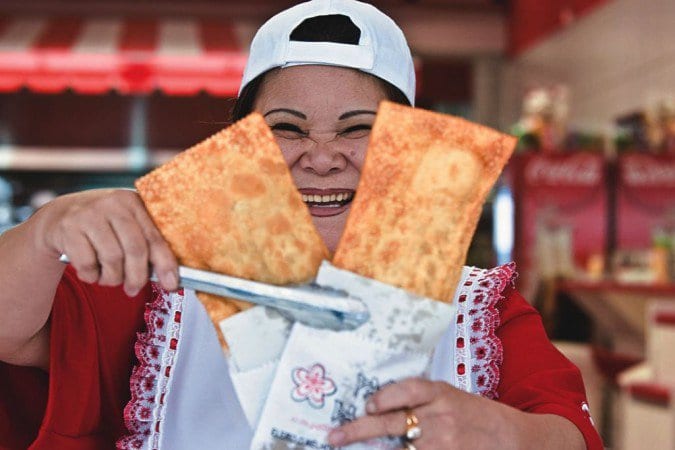
The creation of these pastries is credited to the Japanese immigrants that arrived in Brazil during World War II. Often pretending to be Chinese, these immigrant families came up with the version of the pastel we know today. Inspired by the Chinese spring rolls and jiaozi dumplings, they used ingredients that could be easily found in the Southeast of Brazil, where they lived, to create their own version of these Asian delicacies.
Pão de Alho
A staple in any decent barbecue, these cheesy garlicky buns are the perfect match for your steak and will make you want to be invited to cookouts every weekend. Made with pão francês, a Brazilian type of bread that resembles a shorter but larger and softer baguette, this garlic bread attracts even vegetarians to barbecues and steakhouses in the country.
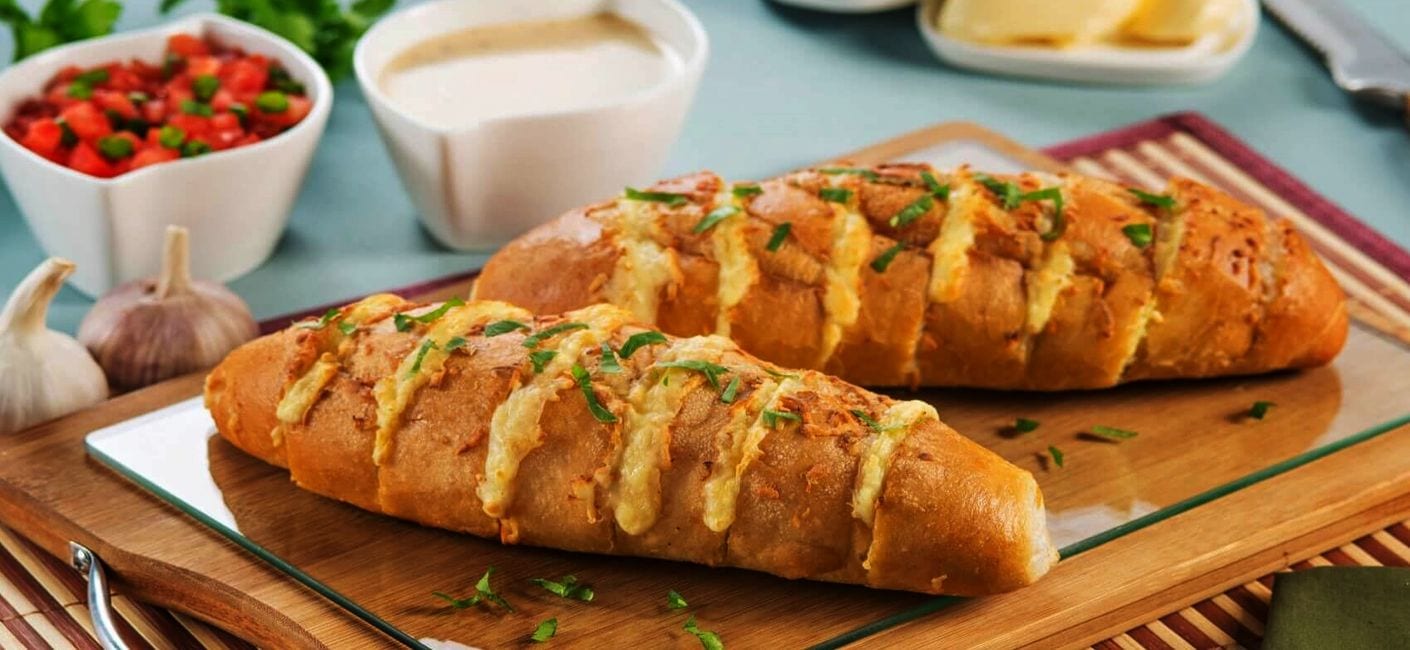
In a bowl, mix mayonnaise, minced garlic, oregano, and salt. Get your loaves of bread (baguettes will work just fine), and slice them up without detaching the pieces from the bottom of the loaf. Take the garlic mayo mixture and spread it between the slices of bread, then sprinkle some parmesan cheese on top of the loaf. Now plop it on the grill.
Churrasco
Brazil is known around the world for its amazing meat. Open-air meat cookouts are not only common, but also part of the Brazilian culture. But eating meat can also be a gastronomic experience at a restaurant: in Brazil, churrascarias are all-you-can-eat establishments where for a set amount of money you are served unlimited meat and appetizers, including traditional dishes such as pão de queijo, pão de alho, queijo coalho, and farofa.
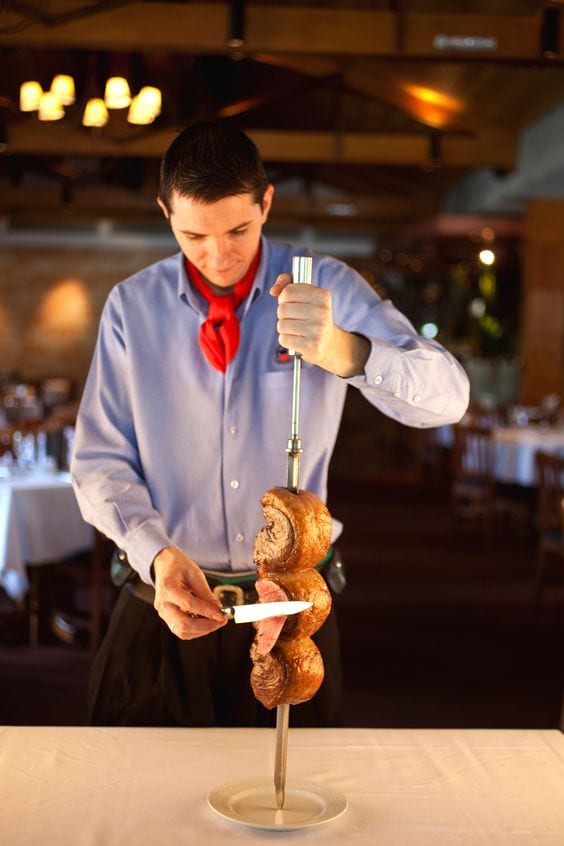
At-home outdoor churrascos are usually combined with a Samba playlist and very cold beer. Some of the most common meats for these occasions are sirloin steaks, ribs, rump skirts, rump steaks, flank steaks, as well as pork ribs, chicken thighs, chicken wings, and even sausages. Enjoy, but take the rest of the day off just to chill, because we promise you will eat too much to be able to do anything else after!
Carne de Sol
The name “carne de sol” means “sun meat”, but regardless of its name, exposing the meat to sun rays is not a part of this method of conserving animal source food. The actual process only includes salting and drying the meat in a well-ventilated space, not necessarily open-air. Any cut can be used for this as long as the meat is fresh; and when it’s ready, the meat can be eaten as a main dish, or as part of another dish.
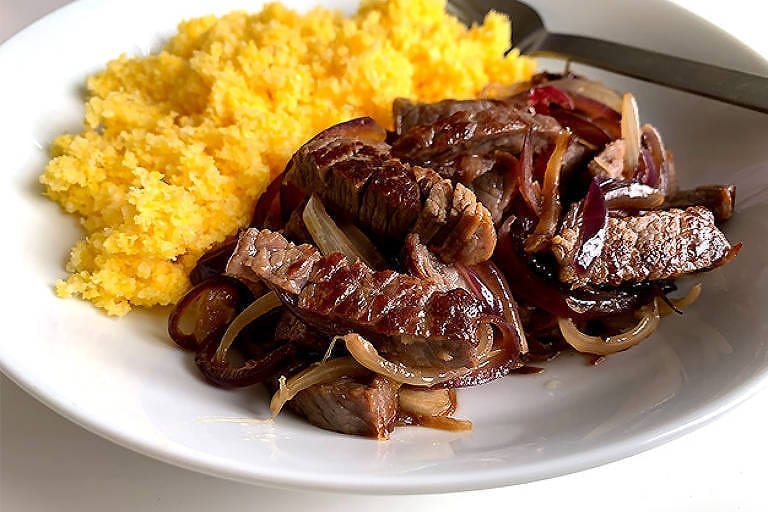
While it is a traditional dish in the Northeast, the process of salting and drying meat under the sun is actually prehistoric. The Portuguese colonizers were probably the ones who brought the concept to Brazil. It is believed that it all started when fishermen started using the process used only on fish also on meat during the first few centuries of colonization.
Paçoca
Just like pamonha, paçoca is also a typical snack served on the day of John the Baptist. It is made of peanuts, sugar, and sometimes manioc or corn flour, and has a similar taste to peanut butter, even though its consistency is more solid. Its name derives from the Tupi word “posok“, meaning “to crumble”. Even though the native people already had a similar recipe, the paçoca as we know it today was created during the Colonial Period in Brazil.

Peanuts are a pretty healthy food, so you can eat paçocas without guilt! They are linked to anti-inflammatory action, are full of good fats and omega-3, lowering the risk of cardiovascular diseases, and are full of nutrients. So next time you visit Brazil, make sure to try paçoca and bring back home a box of these little peanut treats for your friends, they will love you for it.
Tapioca
Easy to make and very versatile, tapiocas are crepe-like delicacies. Made from manioc starch, they can have fillings that vary from butter or cheese to dulce de leche or condensed milk. The tapioca, called “beiju” by the Native Brazilian people, was discovered by the Portuguese colonizers while they observed Native Brazilian food. Nowadays, even though it is considered a typical dish of the Northeastern region of Brazil, the tapioca has become a very common breakfast all around the country.
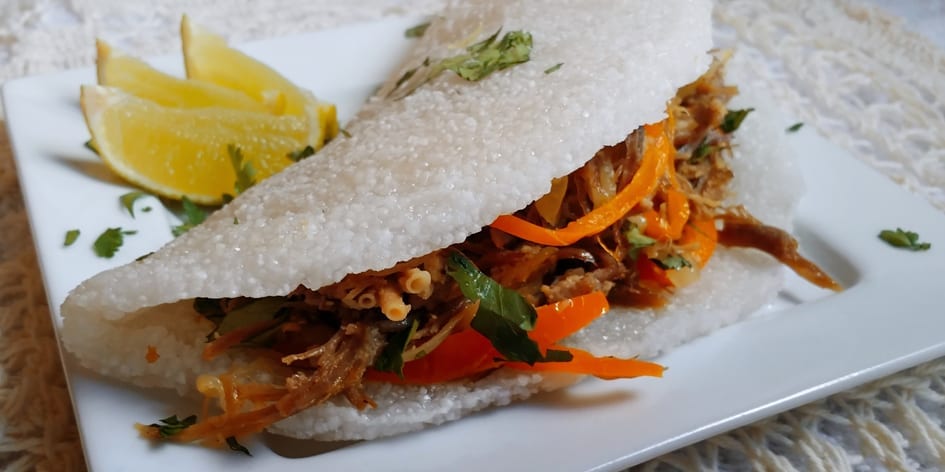
Although tapioca is not full of nutrients, it does have a very low level of sodium, it is gluten-free and a great source of energy. Besides, it is rich in calcium, iron, potassium, as well as folate and vitamin B1. Another interesting fact is that the manioc starch used to make tapiocas is also used to make pão de queijo cheese puffs.
Cocada
This traditional coconut candy is not only famous in Brazil, but also in the entire South American continent and its original country, Angola. It is very common to see street vendors selling this sugary treat on the street, especially in the Northeast of the country. One interesting fact is that coconuts are the third favorite fruit of the Brazilians, while oranges and bananas are the first and second.
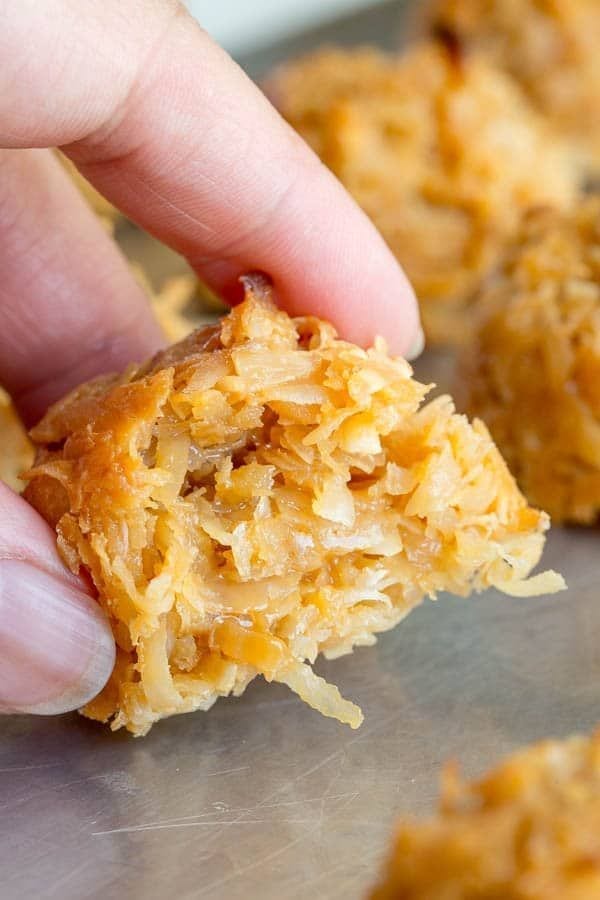
And speaking of fruits, some variations of the cocada recipe include different types of fruits, as well as condensed milk, coconut milk, egg yolk, and other ingredients. These variations happen because the recipe is recreated in different countries, and the recipes are adapted to each culture it belongs to. One more fun fact: the expression “rei da cocada preta” (king of the black cocada) is used in Brazil to refer to someone who thinks they are better than everyone else.
Pudim de Leite Condensado
Even though it is called “pudim”, the Brazilian pudding is nothing like Yorkshire pudding or bread pudding. These puddings are actually flans. And although flans are common in numerous countries, they are definitely considered a staple dessert in Brazil. In the South American country, the main ingredient in the flan recipe is sweetened condensed milk, but nowadays there are some flans flavored with chocolate, coconut, or even paçoca.
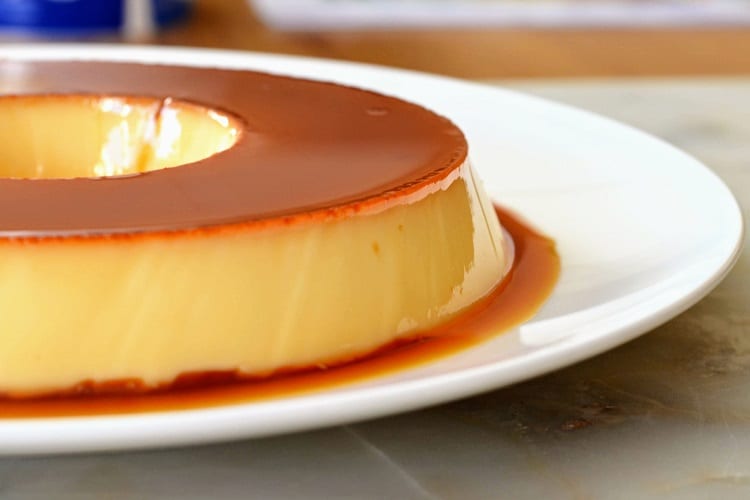
And they are actually pretty easy to make at home: all you need is eggs, sugar, sweetened condensed milk, and milk. First, you will make the top caramel syrup with sugar and water. Then, after pouring the caramel into the traditional round baking tray with a hole in the middle, you will make the flan by mixing the milk, condensed milk, and eggs in the blender.
Bem-Casado
Just like some others in this list, this delicacy has a very interesting name: “bem-casado”, which means “well-married”. With a name like this, obviously it is common in wedding parties. And even though it was actually invented in Portugal, this treat has been around in Brazil since at least the beginning of the 20th century, and it is equally important in Brazilian and Portuguese wedding celebrations.
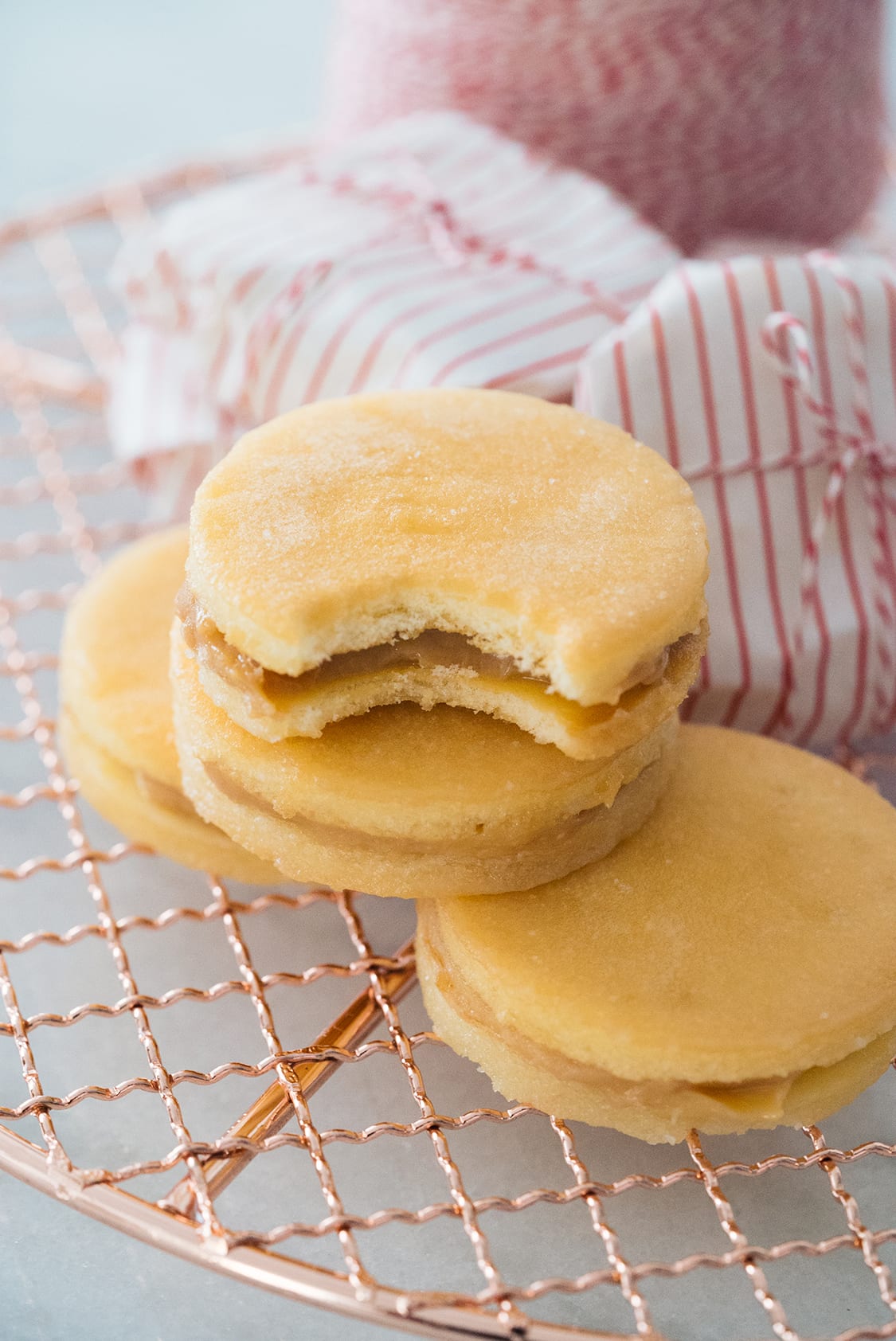
The packaging has to be impeccable, since it is the representation of the couple’s union. According to the tradition, each guest must receive a bem-casado in order to guarantee the couple’s happiness. Nowadays, the recipe is still the same, but its packaging and name now can be changed to fit different celebratory situations: bem-nascido (for baby births), bem-vivido (for birthdays), bem-batizado (for baptisms), bem-formado (for graduations) etc.
Cartola
If you want to try cartola, you will have to travel to the Northeast of Brazil. This simple yet tasty dish is typical of the state of Pernambuco. This dessert, in fact, symbolizes the three main people who formed the region’s culture and it is considered the result of the cultural miscegenation of the Portuguese colonizers, the local indigenous people, and the African slaves that were brought to the country back in the 16th century.
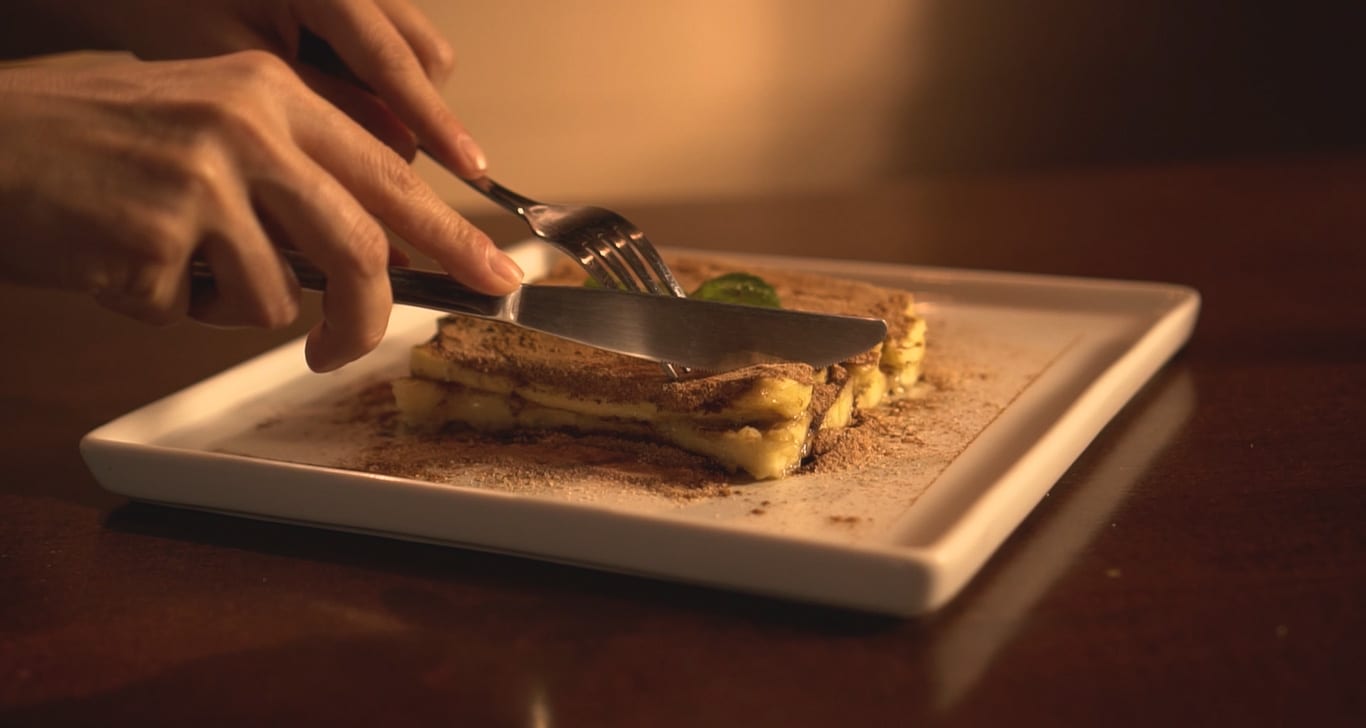
The word “cartola” means “top hat”, which probably comes from its shape, the flat plate being the brim and the bananas and cheese as the crown of the hat. To make it at home, you will need to cut some bananas in long slices and fry them in butter. After that, grease the frying pan again and heat up some slices of cheese. Place these on top of the bananas and sprinkle some sugar and cinnamon on top of your dish.
Cajuzinho
Brazilian kids’ parties are really the best place to eat all types of amazing treats. Cajuzinho (“little cashew”) is the name of a Brazilian sweet made of peanuts, but it’s because of its shape resembling a cashew fruit that it receives the name of little cashew. While this dessert only requires roasted and ground peanuts, sweetened condensed milk, and margarine or butter, some people like to add ground cashew nuts or cocoa powder to the recipe.
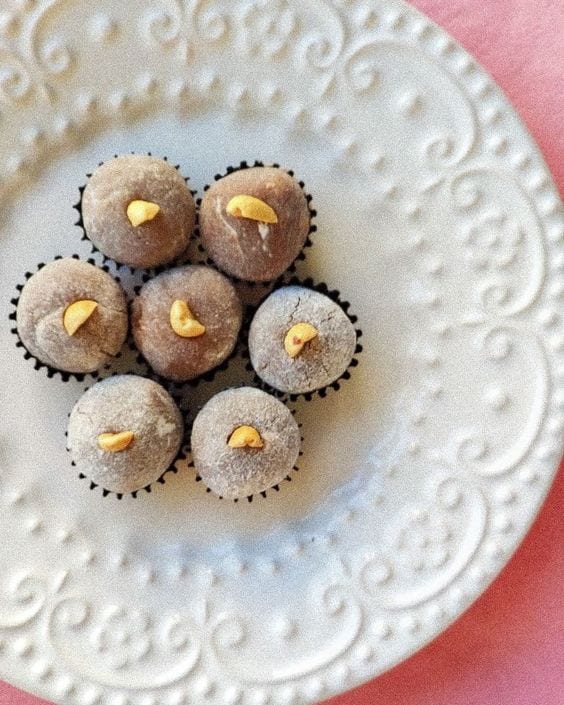
After deciding which of the extra ingredients you want to use, put all of the ingredients in a pot, stir until the dough stops sticking to the bottom of the pot, and let it cool. After that, use your hands to roll it and shape it as a miniature cashew (some people will even stick a cashew nut on one of its sides to make it look even more like a cashew), and sprinkle some sugar on top of it.
Beijinho
The word “beijinho” has a really sweet meaning in Portuguese: “little kiss”. Now guess where you can find these?! If you guessed kids’ birthday parties, you were correct! Just like brigadeiros and coxinhas, children love to have beijinhos on their snack tables at their birthday parties. This delicacy was actually created by a 19-year old Brazilian girl, whose father had studied culinary in France and had been working on a dessert mixing sweetened condensed milk and curdled goat milk.

At first, she tried mixing condensed milk with lychee juice but quickly switched to coconut. Nowadays, these are basically a coconut version of the traditional brigadeiro, so you can simply swap the cocoa powder in the recipe for grated coconut and mix it with some butter and a can of condensed milk to make beijinho at your own home.
